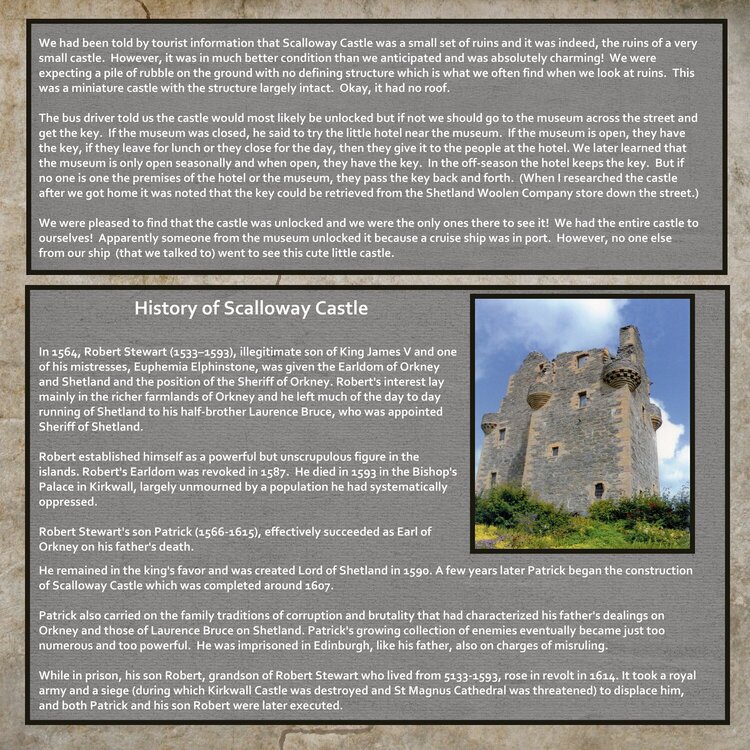EXTRA 11% OFF Orders $100+ With Code: THANKYOU


 Give a Cheer
Give a Cheer
We had been told by tourist information that Scalloway Castle was a small set of ruins and it was indeed, the ruins of a very small castle. However, it was in much better condition than we anticipated and was absolutely charming! We were expecting a pile of rubble on the ground with no defining structure which is what we often find when we look at ruins. This was a miniature castle with the structure largely intact. Okay, it had no roof.
The bus driver told us the castle would most likely be unlocked but if not we should go to the museum across the street and get the key. If the museum was closed, he said to try the little hotel near the museum. If the museum is open, they have the key, if they leave for lunch or they close for the day, then they give it to the people at the hotel. We later learned that the museum is only open seasonally and when open, they have the key. In the off-season the hotel keeps the key. But if no one is one the premises of the hotel or the museum, they pass the key back and forth. (When I researched the castle after we got home it was noted that the key could be retrieved from the Shetland Woolen Company store down the street.)
We were pleased to find that the castle was unlocked and we were the only ones there to see it! We had the entire castle to ourselves! Apparently someone from the museum unlocked it because a cruise ship was in port. However, no one else from our ship (that we talked to) went to see this cute little castle.
---
History of Scalloway Castle
In 1564, Robert Stewart (1533–1593), illegitimate son of King James V and one of his mistresses, Euphemia Elphinstone, was given the Earldom of Orkney and Shetland and the position of the Sheriff of Orkney. Robert's interest lay mainly in the richer farmlands of Orkney and he left much of the day to day running of Shetland to his half-brother Laurence Bruce, who was appointed Sheriff of Shetland.
Robert established himself as a powerful but unscrupulous figure in the islands. Robert's Earldom was revoked in 1587. He died in 1593 in the Bishop's Palace in Kirkwall, largely unmourned by a population he had systematically oppressed.
Robert Stewart's son Patrick (1566-1615), effectively succeeded as Earl of Orkney on his father's death.
He remained in the king's favor and was created Lord of Shetland in 1590. A few years later Patrick began the construction of Scalloway Castle which was completed around 1607.
Patrick also carried on the family traditions of corruption and brutality that had characterized his father's dealings on Orkney and those of Laurence Bruce on Shetland. Patrick's growing collection of enemies eventually became just too numerous and too powerful. He was imprisoned in Edinburgh, like his father, also on charges of misruling.
While in prison, his son Robert, grandson of Robert Stewart who lived from 5133-1593, rose in revolt in 1614. It took a royal army and a siege (during which Kirkwall Castle was destroyed and St Magnus Cathedral was threatened) to displace him, and both Patrick and his son Robert were later executed.
No products have been added to this project.
Thanks for spreading positivity!
September 28, 2016
September 26, 2016
September 22, 2016
September 21, 2016
September 19, 2016
September 19, 2016
September 19, 2016
September 18, 2016
September 18, 2016